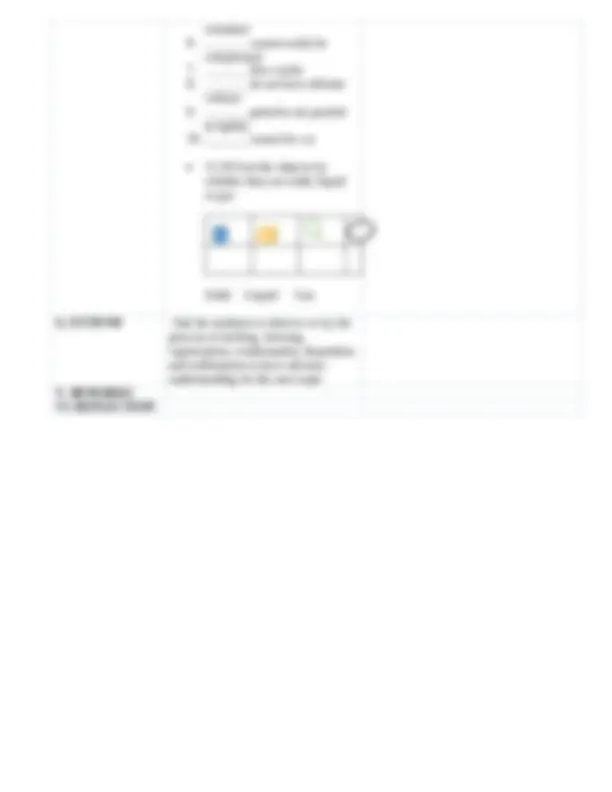



Study with the several resources on Docsity

Earn points by helping other students or get them with a premium plan


Prepare for your exams
Study with the several resources on Docsity

Earn points to download
Earn points by helping other students or get them with a premium plan
Community
Ask the community for help and clear up your study doubts
Discover the best universities in your country according to Docsity users
Free resources
Download our free guides on studying techniques, anxiety management strategies, and thesis advice from Docsity tutors
This document is compose of 7E's lesson plan which can be use as a guide in making lesson plan in matter.
Typology: Study Guides, Projects, Research

Limited-time offer
Uploaded on 06/04/2022
4.8
(5)2 documents
1 / 3

This page cannot be seen from the preview
Don't miss anything!



On special offer
SCHOOL: Aroroy National High School GRADE LEVEL: 8 TEACHER: Antonette C. Cedillo LEARNING AREA: Science TIME & DATE: 8:30-9:30 QUARTER: 3 I. OBJECTIVES A. Content Standards: Demonstrates understanding of the particle nature of matter as basis of explaining properties, physical changes, and structure of substances & mixtures B. Learning Competency: Explains the properties of solids, liquids and gases based on the particle nature of matter- (S8MT-III-a-b-8) C. Specific Objectives: At the end of the lesson the learners should be able to: Describe the properties of solid, liquid, and gas Sort objects by whether they are a solid, a liquid, a gas II.CONTENT- Phases of Matter: Solid, Liquid and Gas III. LEARNING RESOURCES A. Reference
expectations during the discussion and the activities they should take part in. Solicit some ideas from the class to know some things they already know C. EXPLORE The teacher will conduct an activity: it will be a differentiated instructions activity (FOUR GROUPS) 15 minutes This will be assess by the rubrics The group 1 will conduct the “ I can fill you” activity The group 2 will conduct the “ I code do that” activity The group 3 will conduct the “ where I belong” activity The group 4 will conduct the “ Matter always matters” activity The learners will group their selves into 4 groups and will listen to the teacher’s instructions for the mechanics and for the rubrics of the activity “ I can fill you”- fill the particle of the state’s matter according to their descriptions “ I code do that”- Code the letters to form or create a word that describe the properties and paste the picture that corresponds it “ Where I belong”- Sort the pictures whether it is solid, liquid or gas “Matter always matters”- Complete the poems. Paste the right word/s in the blank space D. EXPALAIN Let the learners explains their output to the class through their group representatives 1 or 2 from the group will present and explain their output E. ELABORATE Let the teacher check the answer of the learners and add some information The teacher will discuss the definition of solid, liquid, and gas along its properties. And give examples to support the theory The teacher summarizes learning from lesson being discussed making emphasize or the knowledge needed for the competency standard The teacher will ask to the clarifications and misconceptions of the students if they have The learners will cooperate to the discussion by sharing their ideas on the topic discussed and jot down some notes Using draw lots the student will be picked will generalize his/her learnings of the lesson and will share to the class F. EVALUATE The teacher will give a quiz Describe the properties whether it is solid, liquid or gas. Write S if is solid, L for liquid and G for gas